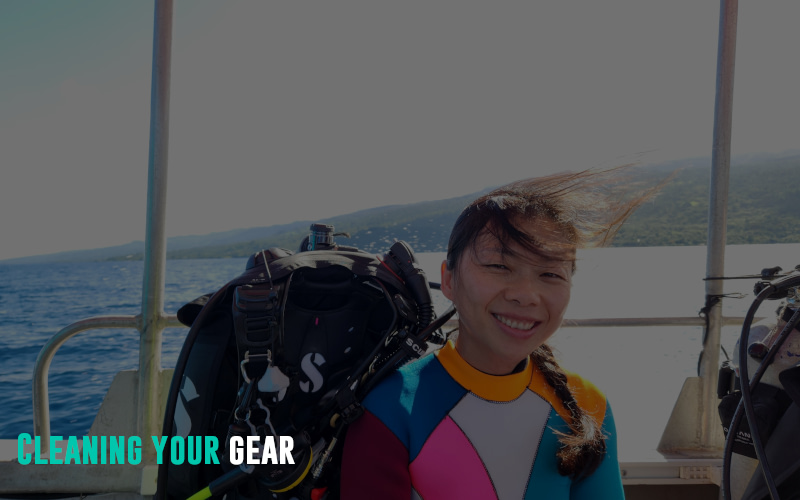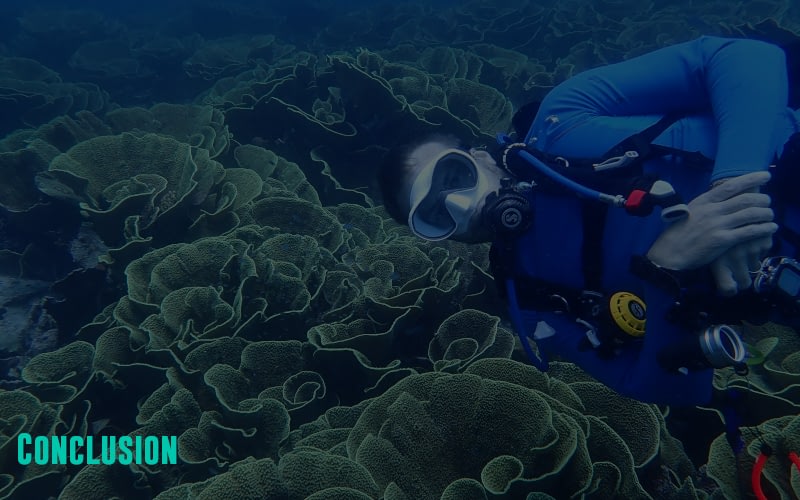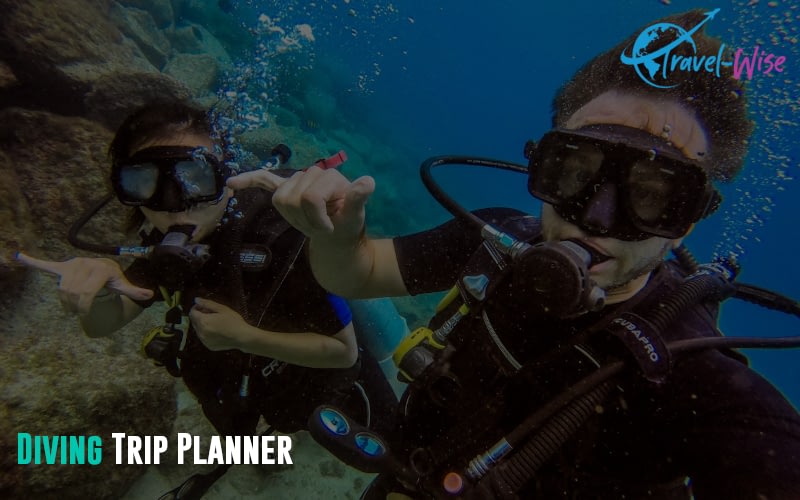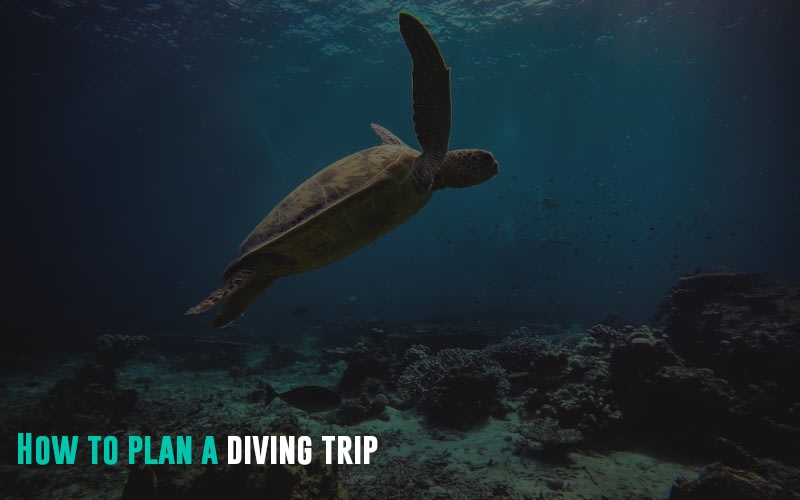Diving into the deep blue sea can be one of the most exciting experiences for an adventurer and nature lover. It lets you enter the underwater world and experience the beauty and diversity of marine life at a serene, leisurely pace. However, being a diving trip planner can be daunting, especially if you’re a new diver. In this ultimate dive travel guide, we will look into everything you need to know to plan the perfect dive trip, from choosing a destination to packing your gear and staying safe.
Knowing your skill level in diving
Diving is fun, but it’s important to assess your skill level before you start packing for your vacation. Knowing your strong and weak points will help you decide many things, like the destination. You should also have a good idea about your comfort level in the water to prevent any anxiety when diving.
An important thing you should know before you try diving is about the certifications, especially if this is your first time doing it. These different trainings and certifications are given to make diving a safe and enjoyable experience for everyone. Some common diving certifications include:
Open Water Diving Certification
If you’re new to diving, knowing about Open Water Diving Certification is essential. This certification covers the fundamentals of scuba diving, such as gear usage, underwater communication, and safety protocols.
It is an entry-level certification and allows divers to dive, with certain constraints, in unrestricted water. The course typically lasts four to seven days. After receiving your certification, you can dive down to 60 feet or 18 meters.
So, on a diving trip, ensure your diving partner has an Open Water Diving Certification.
Nitrox certification
This certification is necessary if you want to dive with Nitrox or enriched air, which can extend your bottom time. You can reduce your chances of decompression sickness and dive for longer times. Many divers claim that using Nitrox makes them feel more alert.
Deep diving certification
Diving with a partner with Deep Diving Certification will allow you to explore sea depths beyond the standard recreational limits i.e., 60 feet or 18 meters. This is considered a specialty course. It covers aspects like identifying and managing narcosis and handling the gas supply.
Dry suit diving (for cold water)
Another important thing you should know before asking “how to go on a diving trip” is dry suit diving, especially if you are a first-timer. When diving in cold water, a dry suit prevents your body from getting wet and will keep you warm.
Though it can look a bit daunting at the beginning, it can make diving fun and exploring cold water a comfortable experience.
How to plan a diving trip?
Once you are sure about your diving skills and have decided to take the plunge, the next step is to plan the trip. Being a diving trip planner is a breeze if you follow some simple planning tips.
Deciding a destination
The first step is to choose your destination. While there are several incredible dive spots globally, list locations you would love to visit. You should also consider other factors like the type of diving you want to do (reef, wreck, cave), the cost of travel, marine life diversity, visibility, and the time of year.
Many people also choose their diving location depending on the marine life they want to see. So, if you have any specific marine species you want to see, keep that in mind when making the choice. For example, if you are a serious shark enthusiast, French Polynesia can be a good diving location for you.
Your skill level
This is the most important part of being a driving trip planner, but unfortunately, many people don’t think about it until it’s too late. Everything from your destination should match your skill level. If you are a beginner, dive sites with strong currents or challenging conditions may not suit you.
Assess your skills honestly when planning a dive and ensure the dive site matches your experience level. If this is your first time, go for places with calm currents and shallow areas.
Best time of year
When planning your trip, knowing the ideal time to visit your destination is important. The weather and water conditions can greatly affect your diving experience. For example, there is a significantly higher chance of tropical storms disrupting a Caribbean vacation in the hurricane season (June – November).
You should also consider factors such as water temperature, visibility, and marine life activity and find the best conditions. If you are diving to see some specific species, make sure they are seen during the time you choose. Since many marine species migrate, you must also plan your trip strategically to observe them.
Best way to dive
Choosing how you want to access the dive site is the next step. You can do this in various ways: shore diving, boat diving, and liveaboard experiences. Before making the choice, consider your preferences and pick the option that best suits you.
Shore diving is convenient, and you will get better access from the beach, while boat diving allows you to explore more areas. Meanwhile, liveaboards offer immersive diving experiences that span multiple days.
Getting to the dive site
Another thing to consider is your transportation options. If you are going somewhere near, all you need may be a car and a fuel tank. But if you plan on going abroad, you might want to start looking at flights early.
Many remote locations only have a few airline options, so there might not be much to consider before you book one. But if you have several options, look into baggage limits, overweight charges, etc, and book better deals.
Flying after diving
You should also note to avoid flying too early after diving. Usually, many people try to make the most of their vacation and hop from one place to another rather quickly. But this can be very dangerous. The primary reason for this is the pressure within the cabin of the airplane. When the plane flies higher at altitude, the cabin pressure drops, similar to the rapid ascent during diving.
When you dive deeper and longer, your tissues and blood absorb more nitrogen. The nitrogen turns into gas bubbles when you return to the surface due to the pressure decrease. This can be extremely hazardous inside your body.
To ensure safe decompression, it’s important to ascend gradually, allowing the nitrogen to pass out through your lungs. Rising too quickly can cause the nitrogen to form bubbles in your tissues or blood, leading to painful and potentially deadly decompression sickness, also known as “the bends.”
It is generally advised that following diving of any kind, you should wait 24 hours before flying.
Liveaboard (or sea safaris) vs land-based dive resorts

There are two popular options for dive trips: liveaboards and land-based resorts. Liveaboards are boats that take you to different diving spots, while land-based resorts are situated onshore.
Liveaboards allow you to dive multiple times a day without the need to travel between sites. They also grant access to more remote diving spots. On the other hand, land-based resorts provide a slower and more leisurely experience. They offer plenty of opportunities to explore the area above water. Additionally, they are often more budget-friendly compared to liveaboard trips.
The decision between a liveaboard and a land-based dive resort depends on your personal preferences. If you are into exploring remote dive sites and spending more time underwater, liveaboard is better suited for you. On the other hand, land-based resorts are best for people looking for comfort and easy access to local amenities.
Packing list
The underwater conditions and topside weather of your destination will determine your dive trip checklist for clothes and other necessities. We have made an example packing list for you to help you with the necessities. Some things you would need on your diving trip include:
- A passport or any other form of identification document
- Dive certification card and logbook
- Mask, snorkel, and fins
- Wetsuit or drysuit
- Regulator and octopus
- Buoyancy Control Device (BCD)
- Dive computer
- Dive watch
- Dive light or torch
- Dive boots and gloves
- Surface Marker Buoy (SMB)
- Reel or finger spool
- Safety marker or whistle
- Rash vest
- Swimsuits
- Dive knife or cutting tool
- Underwater camera
- First aid kit
- Sun protection and insect repellents
- Seasickness medication
Safety considerations
Safety is one of the most important parts of a diving trip if you wish to make it a memorable one for the right reasons. If you are a diving trip planner, it’s critical to consider your safety underwater and onshore.
Health risks
After you have decided on your location, make sure to research the health risks of the place and take appropriate precautions. If you’re going to an area with a risk of malaria, think about taking antimalarial medication and using mosquito repellent.
You should stay updated on other diseases transmitted by insects that are common in the region. Some places may require you to show vaccination proof to gain entry, so keep them handy.
Travel insurance
It is also a good idea to get travel insurance, especially if you’re going to a place with extremely expensive private treatment or are bringing expensive equipment. You should make sure to get insurance that covers scuba diving, especially for medical emergencies that may occur during diving. Also, carefully read the policy details to know about any exclusions or limitations. And try not to do anything that would void it during diving such as diving too deep.
Other safety measures
Make sure to pack your essential dive gear in your carry-on, just in case your checked luggage gets lost. You can also consider renting or borrowing extra equipment when you arrive at your destination. Make duplicates of your visa and passport before departing, and store your cash in multiple discreet locations. This will be helpful in case of emergency. Getting travel insurance that includes coverage for lost or delayed baggage is also a good idea.
Cleaning your gear

It is important to clean your gear correctly to prevent corrosion and extend its lifespan. You should refer to the manufacturer’s guidelines for proper care. Before traveling, make sure your gear is completely dry to avoid any mold or odor problems, and carefully inspect it for any signs of wear or damage. When going on international trips, it’s also a good idea to soak your gear in a gentle disinfectant to prevent the spread of invasive species.
Top destinations to travel to for dive trips
There are several gorgeous diving locations worldwide, which can leave you quite confused. So, if you are looking for some travel inspiration, we have rounded up some destinations that stand out for their exceptional diving experiences:
Beginner Diving
Wreck Diving
- Red Sea, Egypt
- Truk Lagoon, Micronesia
Shark Diving
- Galápagos Islands, Ecuador
- Gansbaai, South Africa
Muck Diving
- Lembeh Strait, Indonesia
- Anilao, Philippines
Temperate Diving
Conclusion

Being a diving trip planner can be a challenging yet exhilarating experience. Armed with the right preparation tips and perfect planning, you can make any diving vacation an unforgettable experience. If you are looking for travel guides, itinerary templates, or experiences shared by expert divers, Travel-Wise can help you. Check out Travel-Wise today to make all your travel planning easier and efficient.


